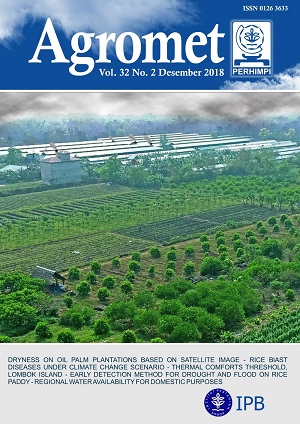Spatial Distribution of Dryness on Oil Palm Plantations Using Landsat image
Abstract
Peatland in Riau is commonly utilized for agricultural purposes including oil palm. This utilization has influenced on peat characteristics on the top soil leading to degraded peatland, associated drought-related fire. In this paper, we identified peat dryness from three different oil palm ages using drought indices proxy to derive information on spatial dryness. Two drought indices were used in this study including the Temperature Vegetation Dryness Index (TVDI) and the Crop Water Stress Index (CWSI). Our results showed that the TVDI value ranged from 0.46 to 0.92, while the CWSI value ranged from 0.18 to 0.80. The highest value of TVDI was found in 2-years old oil palm, and the lowest values was in the 11-years old oil palm. Our CWSI analysis confirmed this pattern that young oil palm has a high moisture stress, as many peat-soils were exposed to direct sunlight. Our findings also revealed that the TVDI and the CWSI were able to interpret soil moisture dynamics on the top layers (10 cm).
Authors
HazrinaM., & RisdiyantoI. (2018). Spatial Distribution of Dryness on Oil Palm Plantations Using Landsat image. Agromet, 32(2), 51-61. https://doi.org/10.29244/j.agromet.32.2.51-61
Copyright and license info is not available

